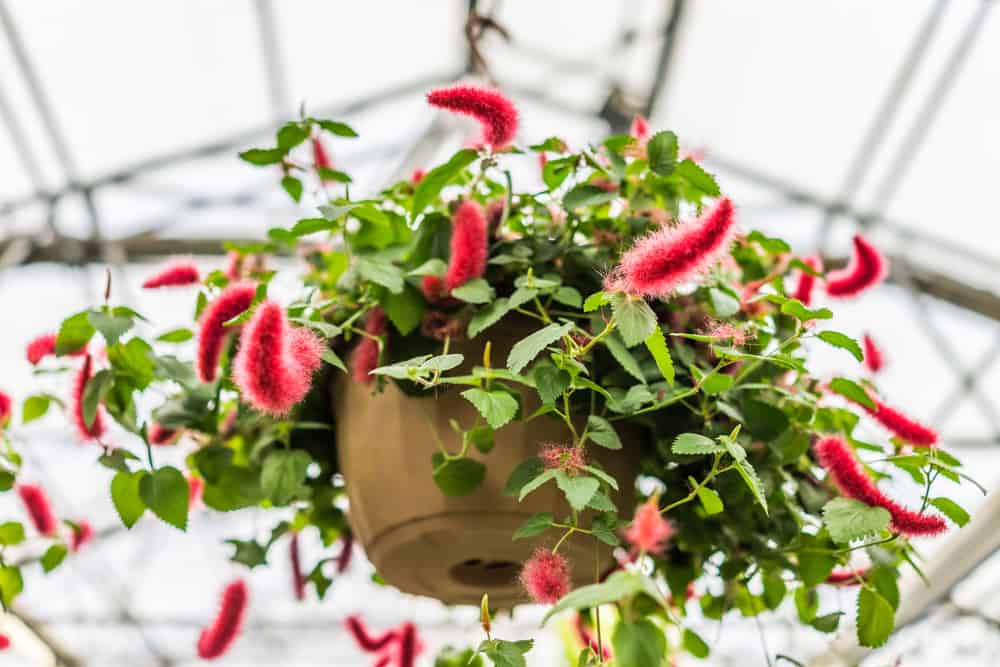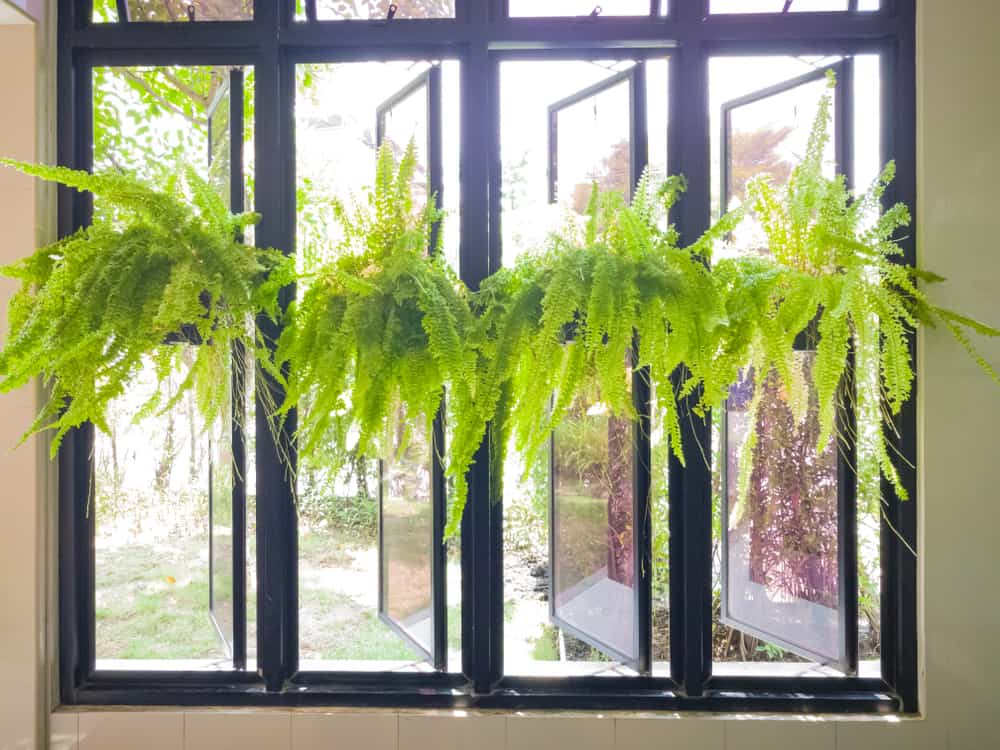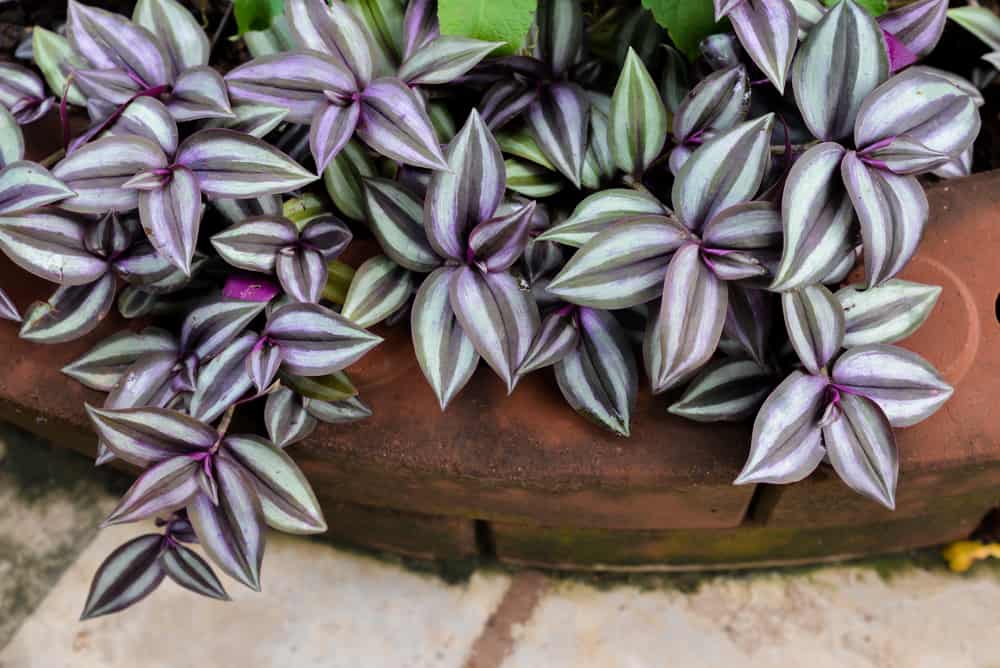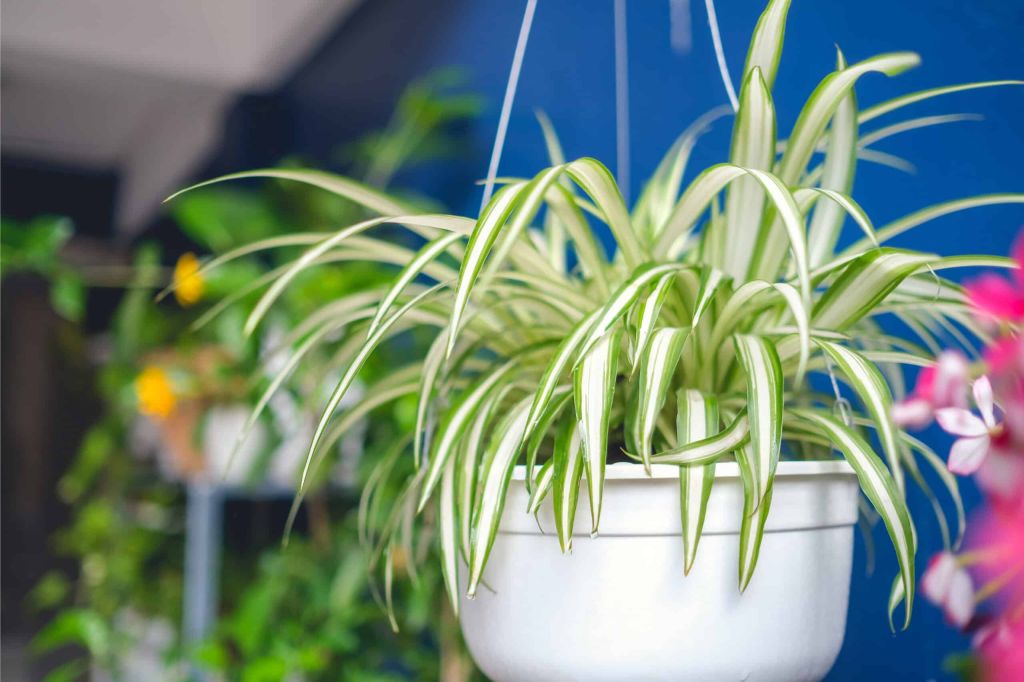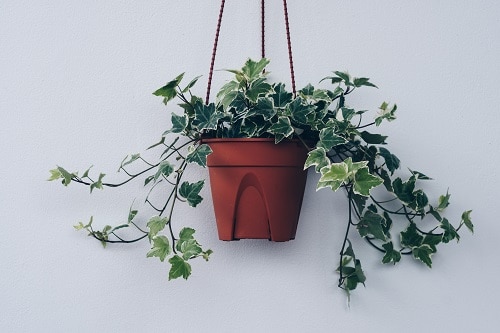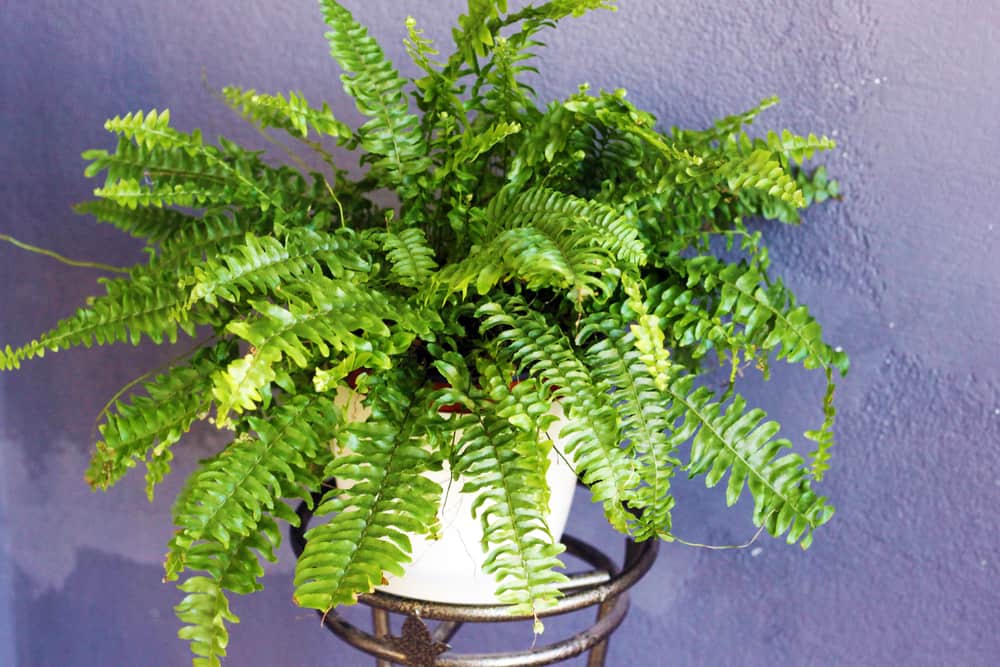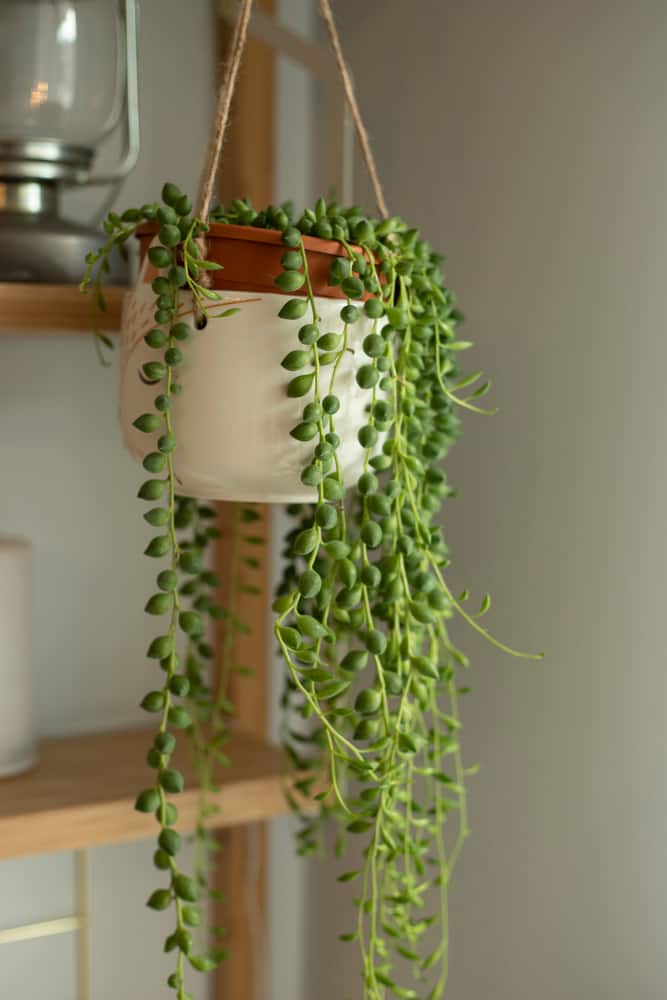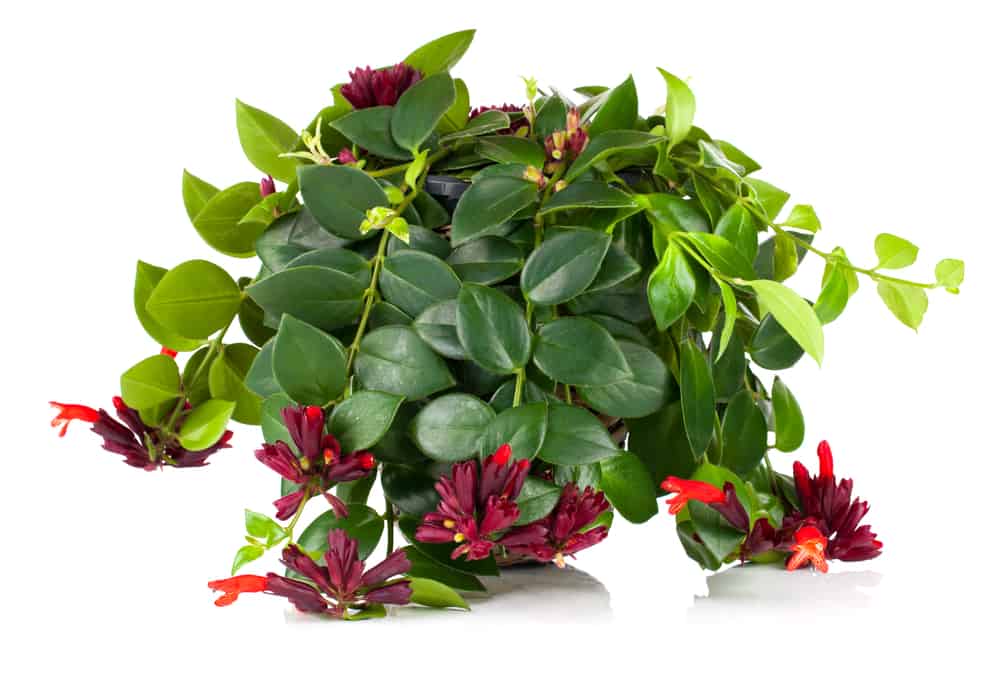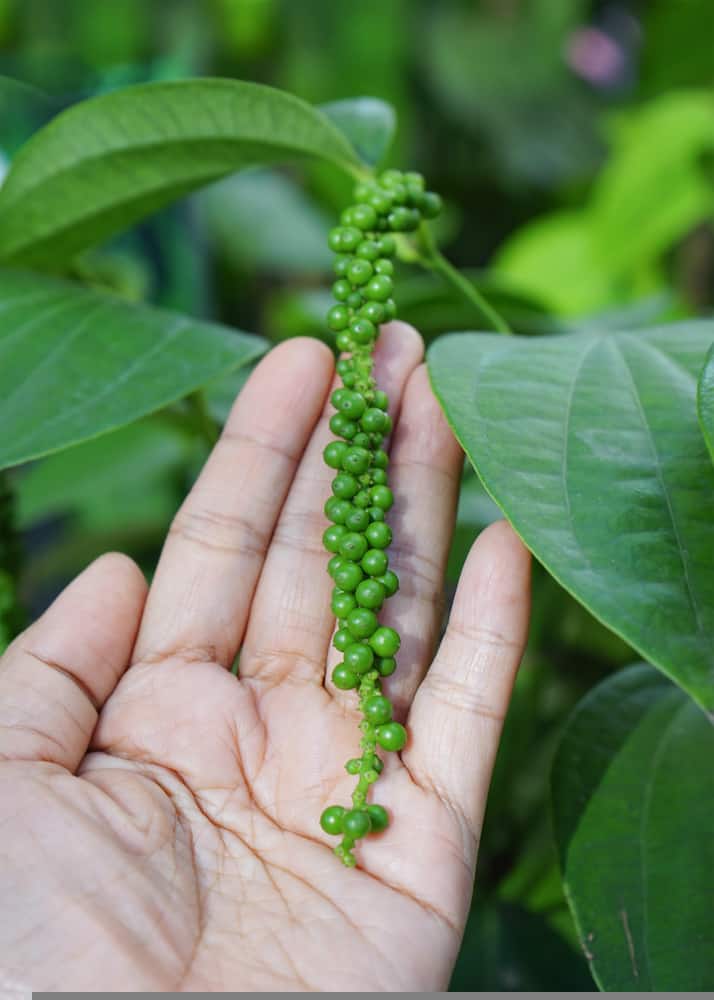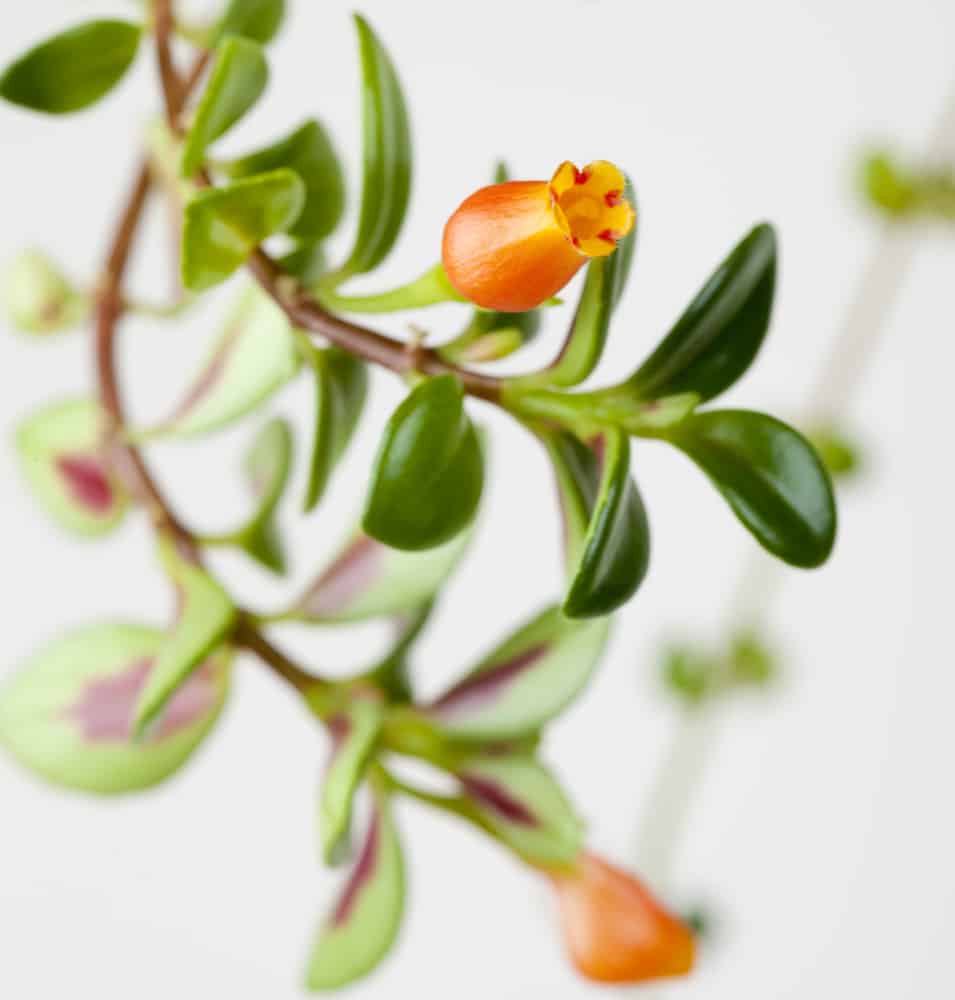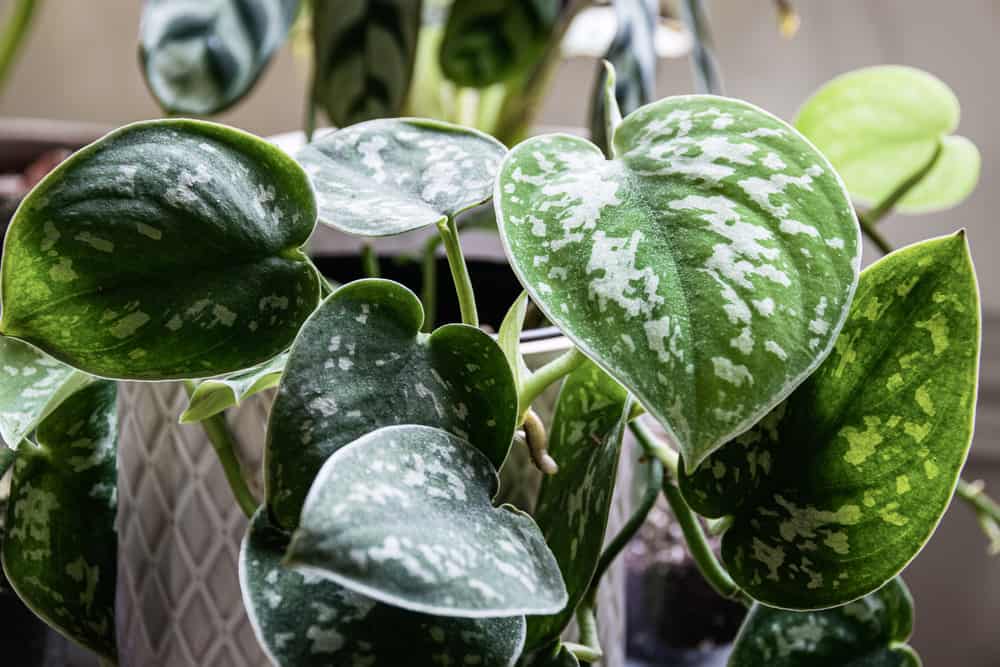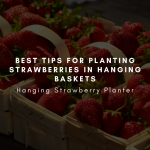HousePlantJoy is supported by our audience. When you purchase through one of our links, we may earn a small affiliate commission. As an Amazon Associate I earn from qualifying purchases. Your cost is not affected.
==================
Our love of greenery continues with the best plants for hanging baskets.
If your home lacks nature and greenery, consider adding a few of our best houseplants for hanging basket or shelf space. Houseplants add to our interior design. They make our homes feel more comfortable and friendly. A few plants on your windowsills and that floor plant in the corner bring a sense of calm and wellness to your home. Why not add a few hanging baskets to bring more color and texture inside. Some of our favorite houseplants look their best in a hanging planter. Those trailing vines add variety and shape to the room. In fact, they may create a more vivid and interesting look that enhances the entire room.
Before placing your plants on their new elevated homes, consider the proper placement.
Ceiling height plays an important factor. Vines and hanging foliage need to be displayed high enough that they don’t interfere with other elements in your home. No one wants to be tickled by your spider plant when they sit on your sofa. Avoid hanging your plants in areas where people may walk under them, too. Imagine your friend’s surprise when his head touches the bottom of your planter, causing drips of water to fall on him. Similarly, they need to be in view. High vaulted ceilings may not be the best place to feature your plants. For such areas, consider using planter hooks on a higher wall area. This creates a dramatic, layered effect. Your plants will be easier to care for, too.
And that brings us to another consideration.
Consider the best height for maintenance. If you need to bring in the ladder to check on your plants and water them, you might regret the placement. However, a household step stool will save you from over-reaching for each maintenance time. The overall look, those gorgeous plants, showering their cascades of natural beauty over your walls, will help determine the placement, too. You want your plants where you can enjoy them. What would be the point of hiding them? And finally, consider the location according to the plant’s needs. Sun-loving plants need to be in a sunny location. But those that require shade don’t fare well in that sunny window. For those who can’t use plant hangers, consider a tall pedestal, hanger, or shelf. In fact, these might offer more choices for location, including an area away from the wall and not near the ceiling height.
Boston Fern
Read: Boston Fern are considered pantropical, as they are native to many tropical regions.
Let’s consider 12 of the best plants for hanging baskets.
- Wandering Jew (Tradescantia zebrina)
- Spider Plant (Chlorophytum comosum)
- English Ivy (Hedera helix)
- Boston Fern (Nephrolepis exaltata)
- Chenille Plant (Acalypha hispida)
- String of Pearls (Senecio rowleyanus)
- Lipstick Vine (Aeschynanthus)
- Black Pepper Vine (Piper nigrum)
- Goldfish Plant (Nematanthus)
- Queen’s Tears (Billbergia nutans)
- Pitcher Plant (Sarracenia or Nepenthes)
- Satin Pothos (Scindapsus pictus argyraeus)
Wandering Jew (Tradescantia)
Tradescantia has three types:
- Tradescantia fluminensis – Enthusiasts consider this to be the classic wandering jew plant. It has dark-green leaves that contrast nicely against the bright, white, three-petaled flowers.
- Tradescantia zebrina – Named for it’s zebra-like leaves most people know as the Wandering Jew. The middle of each half of the leaves is a creamy white, with the outer edges tipped in silver.
- Tradescantia pallida – This unique variety boasts a deep purple with light purplish-pink flowers.It is quite popular among tradescantia fans.If you want to jazz up your color scheme with an easy-care plant, consider the Wandering Jew.
Water them regularly but avoid over-watering. Place in a sunny location. They grow well placed in indirect light, but truly flourish in bright light. For more information on care of this plant, see our page on Wandering Jew Care.
Spider plant (Chlorophytum comosum)
Most people know the Spider Plant as a common houseplant. While it certainly doesn’t qualify as rare, it does bring a delightful beauty to your home, especially as a hanging plant. Known to be easy to care for, this plant grows well in a variety of environments. And, if you happen to forget to water it, the Spider Plant forgives the occasional lack of attention.
You won’t find large, showy blossoms on the Spider Plant. Instead, the plant hosts tiny white blooms which provide a nice accent to the green, narrow leaves. These blades resemble grass and look quite amazing dangling over the sides of your hanging basket.
Your Spider Plant prefers a location with plenty of indirect sunlight. When placed in direct sunlight, the leaves scorch and the plant suffers. However, they will grow in varying amounts of indirect light and can utilize indoor lighting, as well.
Spider plants crave water during the summer and grow especially well with frequent waterings. However, less water in the winter brings the best results.
English ivy (Hedera helix)
Known as the plant associated with the Ivy League Universities, the English Ivy provides a striking feature climbing outside walls. And, as an indoor plant, it can climb a pole or wall, too. However, consider allowing this graceful greenery to adorn your walls from a hanging basket or on a high shelf. The dramatic effect they produce offers an incredible focal point to your room.
The gorgeous English Ivy thrives in bright, indirect sunlight. However, it does best in the winter with a bit more sunlight than most areas provide. Consider placing it in a Southern window or provide some indirect light from inside sources.
English Ivy loves moist, humid habitats. But they need well-drained soil to prevent soaking their roots. A good balance of water encourages a beautiful color change from Ivy green to attractive red foliage in the fall.
Boston Fern Plant Care (Nephrolepis exaltata)
Some consider the Boston Fern to be a fussy plant. Others know it to be one of the easiest and best plants for hanging baskets or shelf-tops. And it can be either.
With proper care, the Boston Fern provides a beautiful array of frill cascading from a hanging pot or perched atop a shelf or tall table. It’s needs are few, but distinct.
Boston Fern, like other ferns, are water lovers. Allow them to dry and the leaves will turn brown and crumble to the ground. They need a lot of water, but not on those frilly leaves. Water at the base, providing a good soak whenever the potting mix begins to dry.
To fulfill their need for continual feeding, dilute liquid fertilizer solution and provide this with their water about twice a month during Spring to Fall. Over the winter, this feeding is usually unnecessary as the plant is not growing.
They also need humidity. If the environment is lacking in this, spritz the plant on a daily basis.
In nature, ferns grow in the undergrowth, receiving dappled or filtered light. They need the same in your home. Direct sunlight harms the fern.
Meet these needs and your Boston Fern grows well for years to come. As a bonus, this plant is one of the best for purifying the air in your home.
Chenille Plant (Acalypha hispida)
Those fuzzy catkins call out for people to touch, just to feel their texture. The Chenille Plant provides an interesting specimen that creates attention from your friends. While they often grow within an outdoor garden, the Chenille Plant makes an ideal houseplant under the right conditions.
These green plants with red fuzzy catkins crave sunlight and plenty of it. If you keep them indoors, provide high levels of bright light. South or East-facing windows make good placements but using artificial light works well, too.
The Chenille Plant soaks up the water and nutrients. Keep them watered and provide nutrients frequently. Some people use compost tea for the regular watering, ensuring their Chenille plants thrive.
String of Pearls (Senecio rowleyanus)
As the name implies, the string of pearls resembles many strings of beads. These succulent plants occasionally produce small white flowers. However, most know them for their beads.
The string of Pearls houseplant loves bright light but will grow in partial lighting. As a succulent, it prefers a lightly moist soil during it’s grooming season. However, let the soil dry a little over the winter months.
Lipstick Vine Plant (Aeschynanthus)
If you seek a plant that blooms for several weeks, consider the Lipstick Vine. These specimens bring cheer to winter households with blooms. Lipstick vines are available in red, pink, or orange, allowing for a variety of colors for your home.
The Lipstick Vine makes an excellent houseplant. They thrive in bright, indirect light and will tolerate low light conditions. Water them frequently in spring and summer, less during the winter months.
Consider purchasing the largest plant you can find to ensure blooms the first season. Also, do not prune this plant until flowering is complete as the buds form on the tips of the plant. Cutting too soon will limit your buds
Black Pepper Vine (Piper nigrum)
Field farmers grow the Black Pepper Vine to produce peppercorns, the same berry that you have in your spice cabinet. However, this plant provides interest and intrigue when you grow it in a hanging planter as a houseplant.
The Black Pepper Vine needs at least partial sunlight to produce peppercorns. They prefer slightly moist soil. Given good growing conditions, it still takes several years before blooms appear.
Black Pepper plants grow to about 3 feet when kept in containers, making them easy for most people to grow. When possible, relocate them outside for a few weeks in the summer to rejuvenate them.
When those berries appear, you might try harvesting them to make your own pepper. We have tips to help you.
Peppercorns first appear as green berries, turning red when they are ripened. Usually, you will see some red and some green berries on the same plant at the same time.
Black or green pepper comes from the green berries. If you prefer white or red pepper, wait for the berries to ripen to full red color.
Goldfish Plant (Nematanthus)
Nematanthus’s common name, Goldfish Plant, comes from the bright, cheery orange blooms shaped a bit like a goldfish. Many call this Christmas Holly, as it blooms in the wintertime. Like the fish, these blooms are orange to yellow. The Goldfish Plant presents these gold colors with red edges for a truly beautiful display.
The Goldfish Plant stays rather small, making it an ideal plant for displaying in a smaller hanging basket. It happy graces over your kitchen sink or even in a smaller bathroom.
An epiphyte or air plant, the Nematanthus uses trees and bushes for support, rather than rooting into the ground, when growing in its native environment. Therefore, they manage well in no soil or a chunky orchid potting mix when kept as a houseplant.
Because their native habitat contains low light levels, it’s important to keep them in a low light area. Water them thoroughly when the top layer of soil is dry. If you don’t use a potting medium, spritz them daily and dunk them in water once a week, then shake off excess water.
Queen’s Tears (Billbergia nutans)
Plant collectors enjoy the bromeliads, like the Queen’s tears, as they often produce many pups, also known as offshoots. Remove these and replant to add to your collection, give to friends and neighbors, or maybe even sell some extras.
The Queen’s Tears plant is another favorite of color enthusiasts. Varieties include pink, purple, yellow, or green, with some variation in the shades of each.
These plants like bright, indirect light but grow well in both high and low light conditions. However, to trigger the autumn bud formation, they need the natural rhythm of shortened days. This is easily controlled with timed lighting or by allowing them to live in natural lighting.
Provide water in the center of the rosette on a daily schedule. Water lightly, never soaking them. They also enjoy a regular misting.
Pitcher Plant (Sarracenia or Nepenthes)
Pitcher plants come in two genera (varieties). The hardy Sarracenia genus exhibits upright pitchers, while those of the tropical Nepenthes genus perform best in hanging baskets, allowing their pitchers to flow over the edge.
If color makes you happy, you will love these unusual plants. They grow in purple, maroon, red, white, yellow, or pink varieties. And some are multi-colored!
Tropical pitchers have very specific growth requirements. However, they thrive in bright light and moist, well-drained soil. But give these plants a bright light (some varieties prefer dappled sunlight) and moist, well-drained soil, and they thrive.
Satin Pothos (Scindapsus pictus argyraeus)
Beginner plant keepers like Pothos plants like this Scindapsus pictus argyraeus because they are very easy keepers. The variegated leaves of the Pothos cascades over the sides of hanging pots, creating a very calming display. They may produce small white flowers.
The satin pothos likes low light and moist soil but will tolerate dry spells. These plants prefer a low light habitat and often perish in bright sunlight.
Best Plants for Hanging Baskets
Best Plants for Hanging Baskets
Best Plants for Hanging Baskets
If you enjoyed reading about the best plants for hanging baskets,
please leave us a comment below.
You may also subscribe to our email list to
keep updated on all the latest news and information.

